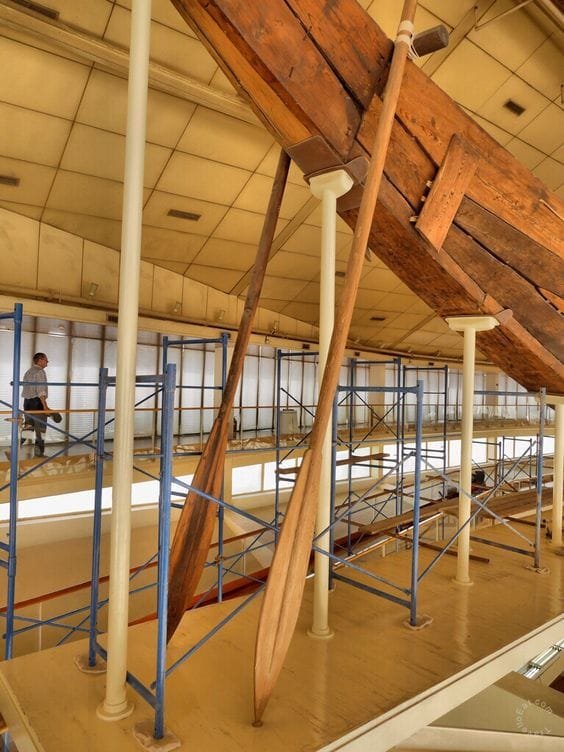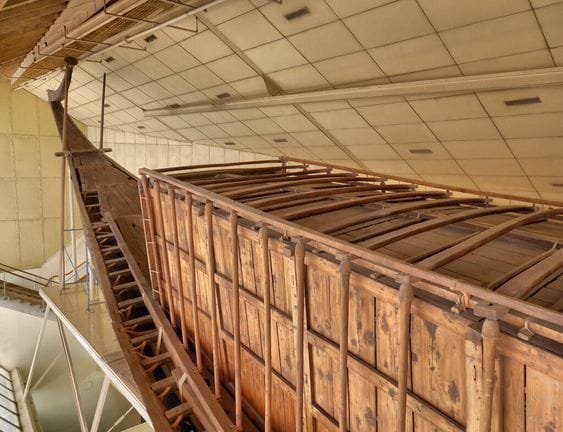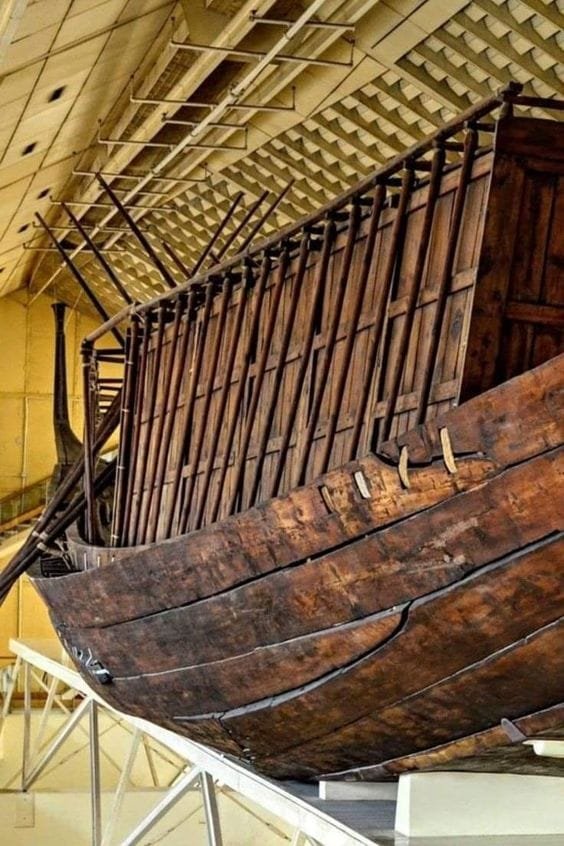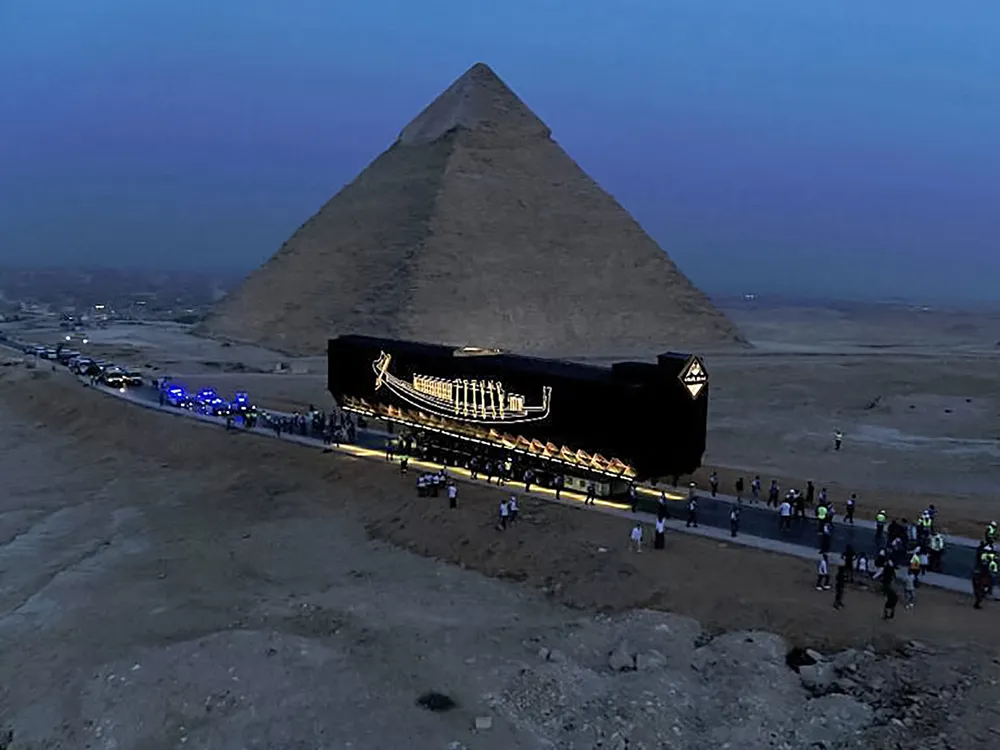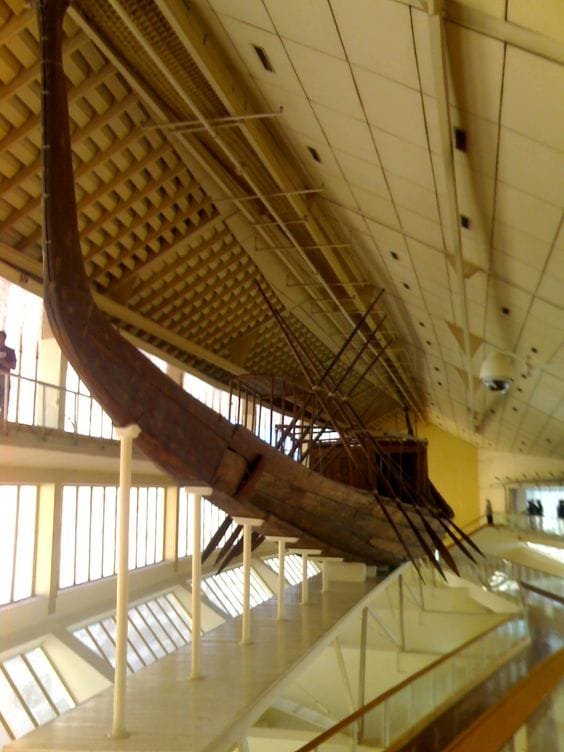The Solar Boat of Khufu is one of the most fascinating and important archaeological discoveries related to the Great Pyramid of Giza. This ancient boat, which dates back to the 26th century BCE, was found in a pit near the Great Pyramid of Khufu (also known as Cheops) in 1954, and it is believed to have been intended for the pharaoh’s use in the afterlife. The boat is constructed from cedar wood and measures approximately 43.6 meters (143 feet) in length, making it one of the largest wooden vessels from ancient Egypt. It is remarkably well-preserved, with its parts meticulously disassembled and placed in the pit, possibly to be reassembled later for the pharaoh’s spiritual journey. The Solar Boat was intended to serve as a symbolic vehicle for Khufu’s journey to the heavens and the afterlife, a common theme in Egyptian religion. The boat was likely meant to carry the king on his journey with the sun god Ra, as the Egyptians believed that the sun’s movement across the sky mirrored the daily cycle of death and rebirth.
The Solar Boat is named after this association with the sun god, as “solar” refers to the connection between the pharaoh and Ra’s eternal cycle. In Egyptian belief, the afterlife was an important continuation of the king’s divine rule, and the Solar Boat was a crucial part of ensuring that the pharaoh could travel across the skies in the afterlife and be reborn as an eternal god. This idea of traveling by boat was integral to the concept of the afterlife in ancient Egypt, where the Nile River was often seen as a spiritual conduit. The boat’s design and craftsmanship reveal the advanced maritime technology of the ancient Egyptians, demonstrating their skill in boatbuilding and their symbolic use of the vessel to represent spiritual and cosmic journeys.



